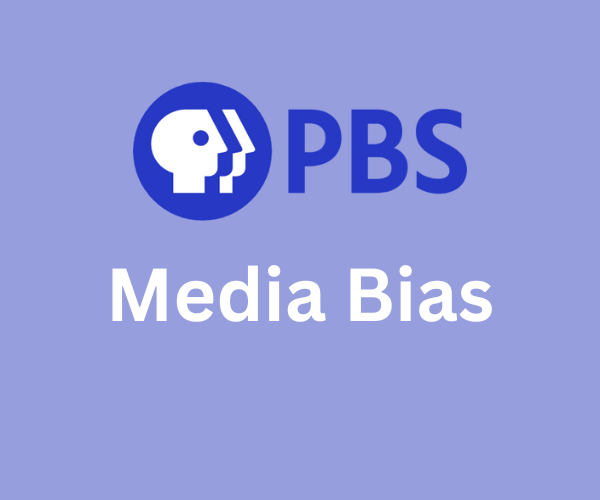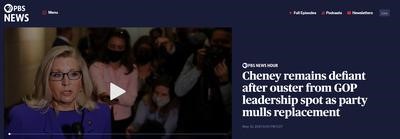
The Public Broadcasting Station (PBS) is one of the most widely recognized news sources in the United States, with over 330 member stations across the country. As of 2023, PBS earns over 42 million adult viewers on primetime television and over 56 million views across its social media platforms. Its official website is one of the most circulated news sources on the Internet, consistently averaging over 15 million views a month.
As the top public broadcasting service and one of the most circulated mainstream news outlets, the question of whether PBS is biased demands a close examination.
In this article, we will analyze the American public broadcaster’s coverage and editorial decisions to determine if there is a discernible political bias in their reporting. Through our analysis, we hope to provide a comprehensive answer to whether PBS is biased and shed light on the factors that contribute to media bias in general.
How Does Biasly Rate News Sources?
Biasly’s algorithms produce bias ratings to help provide multiple perspectives on given articles. Biasly has analyzed 200,000+ news articles from more than 3,200 news sources through our A.I. technology and team of political analysts to find the most factual, unbiased news stories.
Biasly determines the degree of political bias in news sources by using Biasly’s Bias Meter Rating, in which Biasly’s team analyzes media sources’ reliability and bias and produces three scores, a Reliability Score that measures the accuracy of media sources; an A.I. Bias Score, evaluated by A.I.; and an Analyst Bias Score evaluated by political analysts. These scores are rated based on seven rating metrics including Tone, Tendency, Diction, Author Check, Selection/Omission, Expediency Bias, and Accuracy. These metrics help our analysts to determine the political attitude of the article.
Our A.I. machine-learning system employs natural language processing and entity-specific sentiment analysis to examine individual articles and determine their bias levels. By analyzing the key terms in an article such as policies, bias phrases, political terminologies, politicians, and their nicknames, the algorithms can rate the attitude of the text. Bias scores range from -100% and 100%, with higher negative scores being more liberal and higher positive scores being more conservative, and 0% being neutral.
Is PBS Politically Biased?
Biasly’s rating for PBS is based on two scores, one from its computer algorithms which are based on A.I., and one from its Analysts. Biasly rated PBS with a Computer Bias Score of Somewhat Liberal and an Analyst Bias Score of Somewhat Liberal, which means, overall, it provides political coverage from an American center-left political perspective. Analyst scores are based on an average of at least 15 articles with each being reviewed by one liberal, moderate, and conservative analyst. The more articles rated by Bialsy’s analyst team for a particular source indicates a more accurate analyst score. As Biasly rates more articles, the scores will become more accurate. Praise for liberal politicians and policies as well as dislike toward Republican policies and politicians contribute to this rating. Biasly’s scores closely align with determinations by other third-party bias research agencies.
Readers like you are not likely to have a strong opinion of PBS based on your political leanings because their biases are typically subtle and don’t strongly favor one side or the other. In the remainder of this article, we’ll talk about ways to identify this bias so you can separate the opinions from the facts and become a more informed consumer of news.
Before we begin, we need to discuss bias. Bias is a natural function of humans, and we can express it both consciously and unconsciously. Bias is one of the most fundamental forms of pattern recognition in humans. This isn’t to lower the bar and say that “all things are biased,” but to explain the process in which we may come to trust certain news organizations that display patterns of coverage.
On the media’s part, there is an incentive to retain audiences, encourage them to purchase subscriptions, and rate products positively. Bias is a two-way street, people want to see news stories about things they care about, and the media needs viewers to continue their operations. This creates a positive feedback loop that influences what stories are covered and from what perspective. This also explains the actions of more liberal news organizations.
Analysis of Bias in PBS Online Articles
Studies have shown that the average PBS viewer is college-educated, white-collar, regularly votes in elections, and keeps up with the news. Given their educated and well-informed readership base, is PBS really biased? We’ll look at some of their articles in more detail below to identify the signs.
When determining bias, some of the most common metrics used include Tone, Tendency, Author, Diction, and Expediency Bias, which are the primary metrics we’ll focus on below.
- Tone: This represents the attitude of the writing, formed distinctively but related to the author’s word choices or diction.
- Diction: The specific words chosen by the writer.
- Author: A metric related to the article’s author, taking into account their history of stance on issues based on past articles and social media posts.
- Tendency measures how consistently an author shows bias in their work, including factors like their tone and perspective.
- Expediency Bias relates to the immediate impression created by elements like the article’s headline, images, or summary, indicating if they favor a particular viewpoint.

Source: PBS
The first source we’ll analyze from PBS is, “Cheney remains defiant after ouster from GOP leadership spot as party mulls replacement,” which was published in May 2021. PBS’s sources are different from other mainstream media outlets because their original content is sections from their long-running show PBS News Hour. Any traditional articles on the PBS were initially published by the Associated Press. Their correspondents are credited online as the authors of the content and PBS provides a transcript of every section. In the case of this source, those correspondents are Lisa Desjardins and Yamiche Alcindor.
The expediency bias from the headline and thumbnail is neutral. The video thumbnail shows Liz Cheney speaking to the press following her ouster from Republican House leadership. She is surrounded by numerous reporters who anxiously want to hear her remarks. The headline complements the thumbnail by summarizing the image with added context. This informs the reader on what the PBS news section is about without hinting at how they should feel.
The correspondents’ diction was mostly neutral but slightly left-leaning. For example, here are the opening remarks from Lisa Desjardins’s reporting on what happened during Liz Cheney’s ouster. While there is no extreme language, some of her word choices lean left.
“Cheney spoke to her fellow Republican colleagues behind closed doors.
And, at the end, she offered a prayer for the country and for freedom. And then something truly Shakespearian happened. Her colleagues at the end of remarks, the colleagues about to oust her from leadership, stood and gave Cheney a rousing standing ovation.”
Describing House Republicans’ reaction to Cheney’s speech as Shakespearian and rousing portrays her very positively.
The tone of the article is Somewhat Liberal in that the correspondents stick to the facts but do not view the Republican Party positively. For example, Lisa described what Cheney’s ouster says about the Republican Party.
“This is a party that’s been moving to the right for years. And here it was that they booted one of their most hard-line conservatives, a woman who voted 93 percent of the time with President Trump, in favor of someone, the — the woman in waiting for this job, Elise Stefanik of New York, who has a much more moderate record.
It really comes to tell you that this is not about public policy or philosophy. It’s about brand. It’s about the Trump brand.”
Lisa portrays House Republicans’ decision to remove Liz Cheney unfavorably. The reporting creates the impression that Republicans made a grave mistake and is moving in a dangerous direction.
Lisa and Yamiche’s tendency towards Cheney and the GOP don’t change at any point in the news section. Below are Yamiche comments on Cheney’s removal from leadership.
“In fact, of course, we know that former President Trump is every single day questioning the legitimacy of President Biden.
And that, of course, is a core reason why Liz Cheney was ousted, because she would not back what President Trump, former President Trump, is doing.”
When looking at the correspondents’ social media profiles, they do not reveal much bias. Lisa Desjardins’s X (formerly known as Twitter) posts are neutral. They stick to the facts of situations unfolding in Washington D.C. and she does not give her personal thoughts on the matters.
Cheney reporting.
– Thus Cheney has problems w/ those who support Trump and those who want him in the past.
– And that is almost everyone.
– But a source familiar says Cheney is standing her ground, telling people that if keeping her job involves lying she does not want it.— Lisa Desjardins (@LisaDNews) May 7, 2021
On Yamiche’s X account, she mostly quotes public figures without giving her thoughts as well.
I asked Minority Leader Kevin McCarthy what he makes of GOP Reps Liz Cheney and Adam Kinzinger sitting on the January 6th Select Committee.
He replied in two words here at the WH: “Pelosi Republicans.”
— Yamiche Alcindor (@Yamiche) July 26, 2021
Even though this article falls on the left end of the spectrum, article bias can differ between articles and authors, even when they come from the same organization. This shows the importance of looking for the signs of bias — including (but not limited to) tone, tendency, diction, author, and expediency bias — in any article you come across.
Let’s briefly break down another example from PBS: “Read the full letter from Biden’s doctor on the president’s health and ability to lead the government.” Biasly’s A.I. rating for this article is “Center,” as the tone, diction, and tendency remain neutral from start to finish. The author states the facts without using any emotionally charged language that could influence the readers’ opinion.
“President Joe Biden’s terrible performance at the June 27 presidential debate has raised concerns about his age, health and ability to lead the federal government.
Administration officials have blamed his confused and at times indecipherable answers at the debate with Republican Donald Trump on a head cold, jet lag and poor preparation at Camp David.
Biden’s physical exams has not found signs of Parkinson’s or other neurological diseases, Jean-Pierre said.”
These examples show that PBS is generally nonpartisan with articles that vary from objective to somewhat liberal in their biases.
Analysis of PBS Opinion Articles
Before we answer this question, we need to distinguish between opinion and reporting. While reporting is intended to be neutral, giving the reader the facts and quotes from primary sources to let them form their own opinion, opinions are an outlet for columnists to express their personal views on the issues of the day.
Unlike other mainstream media outlets, PBS does not have editorials or opinion pieces. The public broadcasting station prides itself on being an educational resource. Their goal is to inform their audience and let them come to their own conclusions.
As shown above, evidence of bias or opinion in PBS articles is subtle. One must examine the articles closely to find traces of bias. For example, consider the article, “How smugglers seduce Central American migrants with the ‘American Dream’.” The quotes around the American Dream in the title imply the smugglers fleece migrants with a false promise and unrealistic expectations of what they’re lives will be in the United States. The reporting does not provide a perspective from the smugglers’ perspective, specifically why they engage in these acts. It leaves the reader with a somewhat incomplete perspective on the migrant crisis.
On the flip side, the article, “Yellen Outlines to Congress Emergency Measures on Debt Limit,” has a more objective title. The headline states exactly what the article is about, and the reporters strictly focus on informing the reader. They do not implicitly push any agenda. Reliable articles are marked by neutral language and facts from credible sources.
These articles, in addition to those above, are only a small representation of all PBS’s news content. However, they indicate that the outlet is characterized by mostly nonpartisan and objective reporting, with traces of liberal bias from time to time.
Who Owns PBS?
PBS is a publicly funded nonprofit organization, funded by a combination of corporate sponsors and individual citizens. Its president and CEO, Paula Kerger, has publicly avoided sharing her political views. Kerger has stated that PBS’s news reporting has positively impacted all communities regardless of their political background. Her commitment to neutrality aligns with PBS’s nonpartisan reporting.
How to Evaluate and Uncover Bias
It can often be difficult to tell if the news you watch is biased. If you have settled on a news channel, it’s usually because you trust the information you are gaining. Unfortunately, many trust the information they are hearing because it confirms what they already believe. This is referred to as “confirmation bias.” It is important to challenge your beliefs and get third-party verification that what you are hearing is the full story. This is why we recommend using Biasly to compare different news stories side-by-side using our bias ratings to figure out what both sides think of a political issue.
Even though Biasly gave PBS a Somewhat Liberal bias score, remember that bias varies by article. Some article types will inherently have more or less bias; general news articles are known for being less biased than opinion pieces. And while every article you read will be biased to some degree, some stick to the facts better than others, which is why it’s so important to use Biasly’s News Check to help you determine the bias of what you read.


























